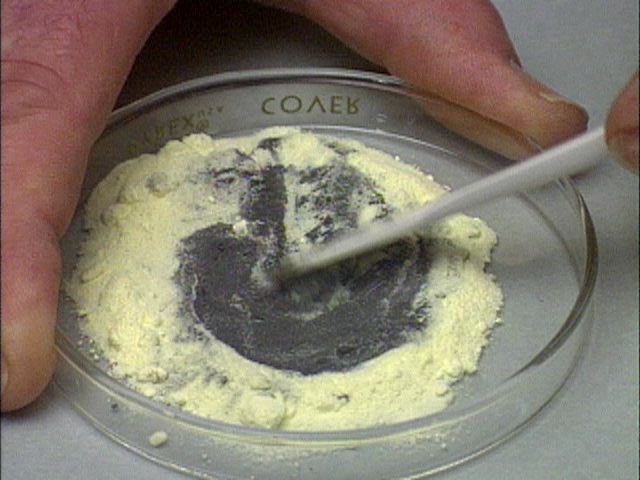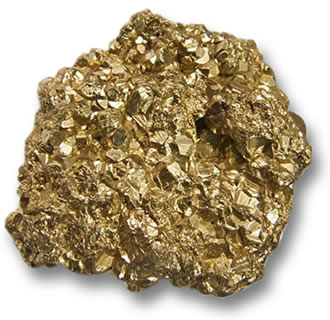Substance: a type of matter with its own unique set of properties.
Examples: salt (NaCl), oxygen (O2), aluminum (Al), water (H2O)
Element: a substance containing only one type of atom
Examples: Fe, Ar, F2, C, N2
Atom: the smallest unit of an element
•Atoms are the particles that make up elemental substances, except that a handful of diatomic elements like H2 and Br2 are made of molecules.
Molecule: two or more atoms bonded together.
•Molecules are the particles that make up compounds1, and diatomic elements are made up of molecules.
Compound: a substance containing more than one type of atom
Examples: CH4, CuFeS2, GaAs, H2SO4, NaCN
•Notice that these all have at least two different element symbols
Pure Substance: only one substance is present
Mixture: two or more substances are present
•different than a compound, because in a mixture the substances are not chemically bonded to each other; they are still separate substances with their original properties intact.
| Mixture of iron (Fe) and sulfur (S). Both substances can be seen separately, and they each retain their own properties. | Compound of iron and sulfur: FeS2 (pyrite a.k.a. fool’s gold). Only one substance is observed now (pure substance), and it is different than both iron and sulfur. |
 |
 |
1. Actually, some compounds are not made of molecules.